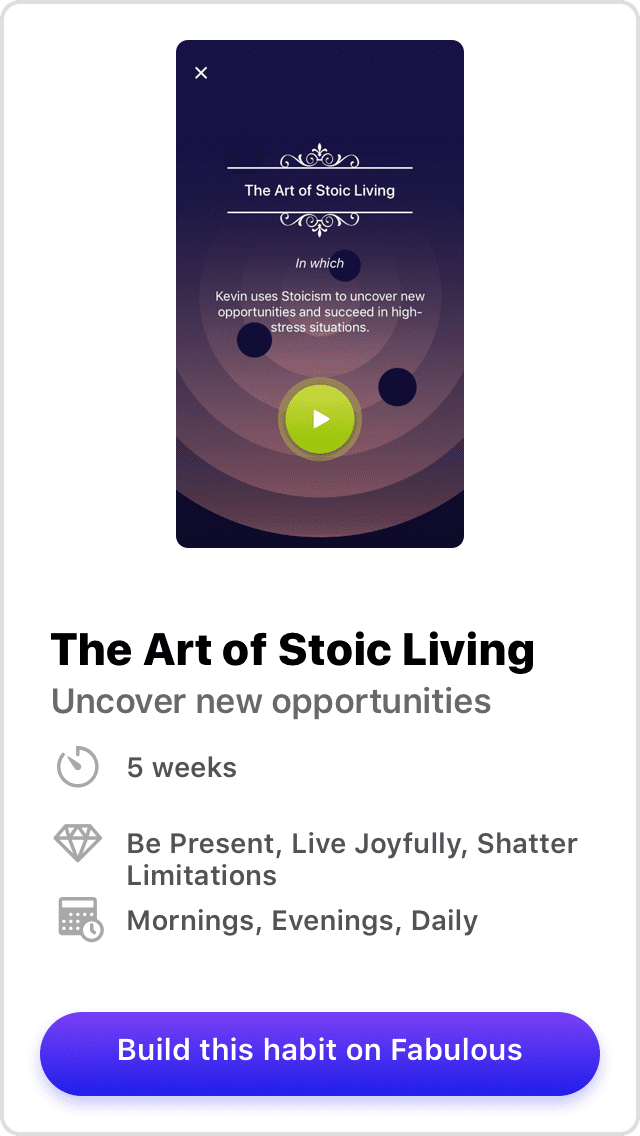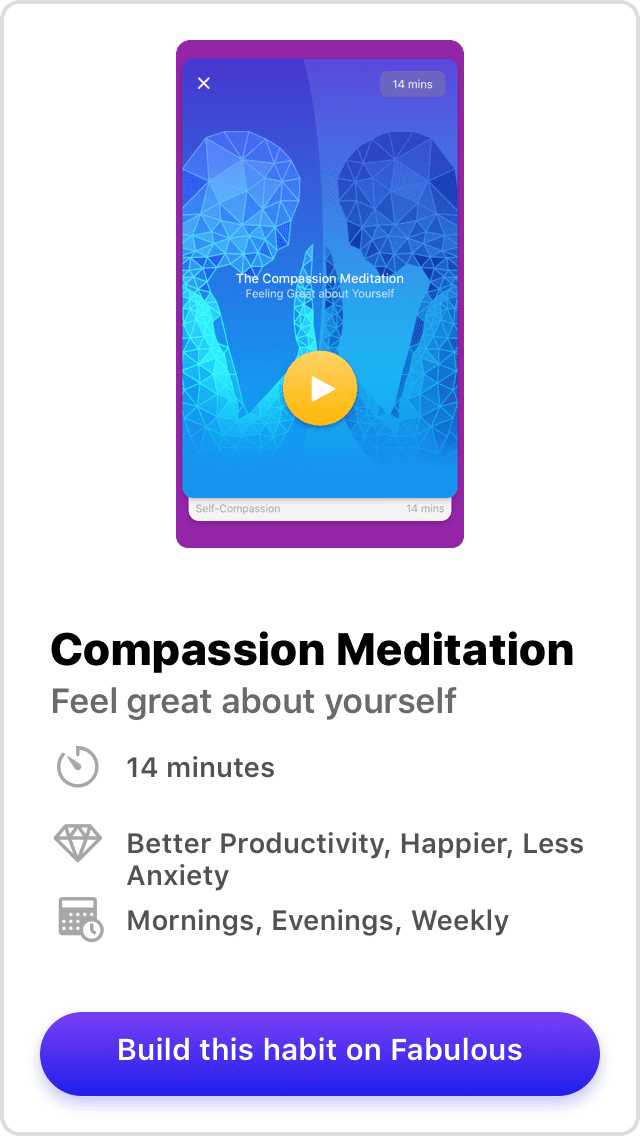Self-described researcher and storyteller Brené Brown has one of the most-watched TED talks of all time. In it, she talks about the power and necessity of vulnerability when it comes to the human experience. After analyzing the thousands of stories and interviews she’d collected while studying shame, she realized that all the happiest people she talked to were the ones who most allow themselves to be vulnerable as they go through life.
In her book Daring Greatly, Brown continues this dialog on vulnerability. She explains where vulnerability comes from, why people avoid it, and how to embrace vulnerability in your own life. Here are our three key takeaways, plus ways Fabulous can help you embrace your vulnerability.
Vulnerability Isn’t Good or Evil
When most people think about the last time they felt vulnerable, it’s usually vulnerability associated with an unpleasant experience. Focusing on these negative experiences lead you to think that vulnerability must be bad, or a weakness to be overcome.
According to Brown’s research, all of this is simply not true. Vulnerability isn’t a weakness. It’s not good or evil. It just is. Vulnerability is the core of all your emotions. To feel is to be vulnerable, and writing emotions off as weakness sucks the joy and purpose right out of life. To be vulnerable is to expose your inner truths to the world, which can take tremendous courage. Would you call someone who stands up for themselves weak? Or someone who’s stepped up to care for a dying family member? Of course not! But they both require being vulnerable.
It might take some time to get comfortable with the idea of vulnerability being a neutral force in your life. But spend some time meditating on it. Consider the times in your life you felt most vulnerable. Did it always feel bad? Can you think of times where vulnerability might feel good? Allow yourself to reflect and feel the vulnerability with a 10-minute Doorway to Self-Esteem meditation.
Avoiding Vulnerability Only Causes More Pain
It stands to reason that, if you perceive vulnerability as a weakness or a negative thing, you’ll go out of your way to avoid vulnerability. One way to do this is by numbing yourself to it, perhaps physically through things like drugs or alcohol. There are also more subtle ways to numb yourself, like isolating yourself from others, or falling into the routine of “Pleasing, Perfecting, and Performing” Brown talks about in her books. In other words, we stifle the parts of ourselves that make us unique and focus only on projecting the parts of ourselves that we know others will accept.
However, while you might avoid getting hurt in this way, you’ll also avoid the joys of life that come from being vulnerable. While you may never have to go through a nasty break-up by avoiding dating, you’ll also never experience a positive and fulfilling relationship, either.
The simple fact is, you can’t hide from vulnerability. To be alive is to be vulnerable. All you can control is how you treat vulnerability and how you respond to moments that make you vulnerable. These ideas of self-awareness and self-control are cornerstone characteristics of the Stoic philosophy. If you want to know more, check out Fabulous’s The Art of Stoic Living journey.
Making yourself vulnerable can be hard, especially if you’re used to keeping yourself guarded. One way to dip your toes in the water is to simply be vulnerable with yourself. Have a dialog with yourself about what makes you feel vulnerable and why. You can do this in a journal or in out loud in front of a mirror.
Building “Shame Resilience” Makes Vulnerability Easier
The people who struggle most with letting themselves be open and vulnerable also tend to struggle with an overabundance of shame. Shame, according to Brown, is the fear of disconnection from others and stems from feelings of inadequacy. You don’t feel good enough, smart enough, qualified enough, or worthy enough of love or happiness.
People combat these feelings of shame in different ways. Some retreat and hide, while others try to resist shame by trying to appease everyone they meet, or by using shame to make other people hurt like they do. You might use a combination of all three of these in some way or another.
However, the only really effective strategy for combating shame is by dragging it into the open. Own your shame instead of trying to bury it. And, perhaps most importantly, reach out to others. Making connections with others when you feel shame can be the quickest and easiest way out of those feelings. Self-compassion, which Fabulous talks about in meditations like The Compassion Meditation is also a key component of shame resilience. Belief in yourself starts with you.
The title Daring Greatly comes from an excerpt of Teddy Roosevelt’s famous “The Man in the Arena” speech. According to Brown, Roosevelt’s words perfectly epitomize what it means to be vulnerable. To dare greatly is to put yourself out there, to get in the arena, and possibly screw up or outright fail. But there is no shame in stumbling. Stumbling is part of the process. Being vulnerable isn’t about succeeding or failing. It’s about acknowledging that, no matter how much you want to be bulletproof, you never will be. Instead, all you can do is get in the arena exactly as you are and be willing to engage openly with whatever comes from it. To call upon your courage, own your insecurities, and let yourself be seen: all these things are what it means to dare greatly.






